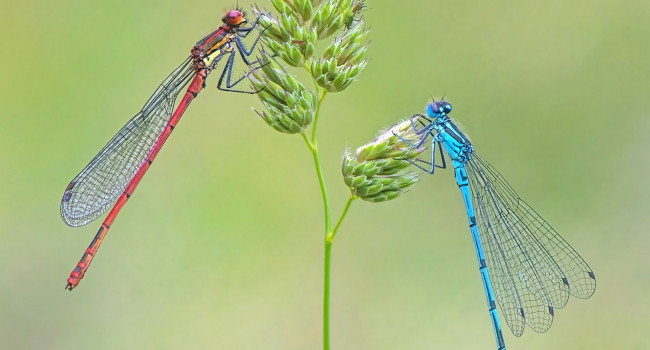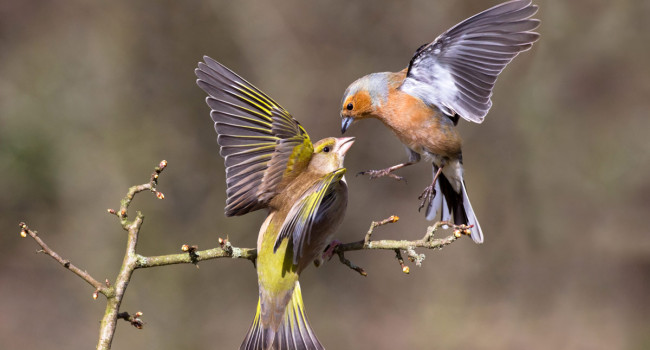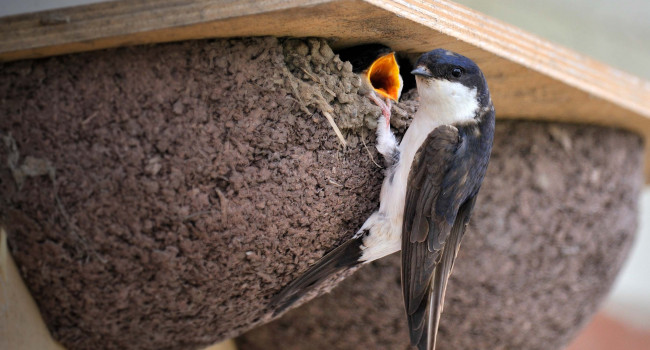Did you get a lockdown frog?
23 Apr 2021 | No. 2021-20
According to the British Trust for Ornithology (BTO), almost a fifth of the people who take part in their Garden BirdWatch Survey (GBW) had Common Frogs in their gardens during 2020.
Garden ponds are likely to be a very important resource for Common Frogs, providing them with somewhere to lay their spawn and for their tadpoles to develop into the next generation. BTO Garden BirdWatchers have been counting the birds and other wildlife in their gardens since 1995 and as a result of this scientists at the BTO are able to keep a close eye on how it is faring.
Rob Jaques, Garden BirdWatch Supporter Development Officer, said, “2020 was an interesting year for Common Frogs. Looking at the GBW data we can see that lower numbers than usual were counted in our gardens during the summer months and, as most people were limited to the wildlife in their gardens you might expect the opposite. This fall in numbers may well have been as a result of the very dry spring and summer making it difficult for frogs, by limiting their activity and possibly even through the loss of spawn as shallower ponds dried out.”
“Fortunately, they are one of the easiest species to help in our gardens. A small pond, some long grass and a log pile are all that Common Frogs need to survive. These features can also help a wide range of other wildlife, like newts, birds and dragonflies. However, don’t be tempted to bring in spawn, tadpoles or frogs from other areas. There is increasing concern that certain diseases are damaging frog populations and these could be spread easily”
He added, “It will be interesting to see how they fare in 2021 and one thing for certain our Garden BirdWatchers will be keeping a close eye on them, without them telling us what they see the picture of our garden wildlife would be a muddy one at best.”
Saturday 24 April 2021 is Save the Frogs Day, you can help do that by providing a small pond in your garden and telling the BTO if anything turns up by taking part in their free Garden BirdWatch survey.
BTO Garden BirdWatch is carried out every week of the year by the volunteers who take part, this enables scientists to compare between years and across seasons. It is free to take part and anyone with an interest in garden wildlife can do it – for more information and to take part, please visit www.bto.org/gbw
Contact Details
Paul Stancliffe (BTO Media Manager)
Mobile: 07585 440910
Email: press [at] bto.org (subject: News%20release%20enquiry)
Mike Toms (Head of Communications)
Mobile 07850 500791
Email: press [at] bto.org (subject: News%20release%20enquiry)
Images are available for use alongside this News Release. These can be downloaded from this link for which you will need to enter the password Rana202120 alternatively, please contact press [at] bto.org quoting reference 2021-20
Notes for editors
Garden BirdWatch is designed to find out how, when and why birds and other animals use our gardens. Participants send in weekly lists of garden birds and other wildlife, which are analysed by scientists working under the BTO's urban and garden ecology research programmes, to investigate the links between changes in wildlife populations and factors such as garden management, food, weather and urban structure. www.bto.org/gbw
BTO is the UK's leading bird research charity. A growing membership and up to 60,000 volunteer birdwatchers contribute to BTO's surveys, collecting information that underpins conservation action in the UK. BTO maintains a staff of 100 at its offices in Thetford, Stirling, Bangor (Wales) and Belfast (Northern Ireland), who analyse and publicise the results of surveys and projects. BTO's work is funded by BTO supporters, government, trusts, industry and conservation organisations. www.bto.org






Share this page